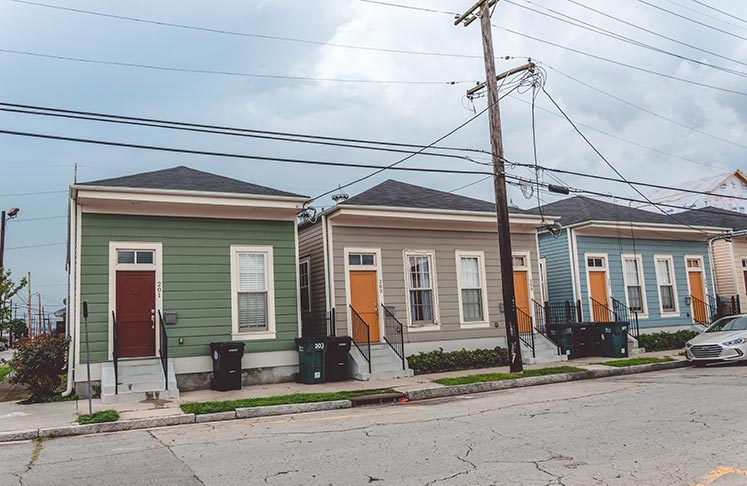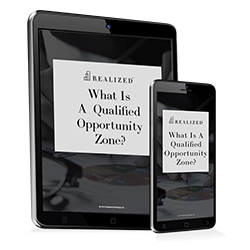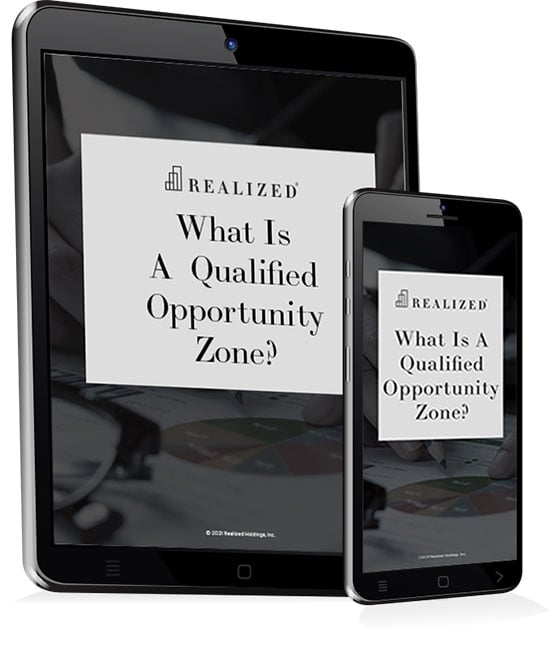
The 26 U.S. Code § 1031 - “Exchange of real property held for productive use or investment,” aka the “1031 Exchange,” aka the “like-kind exchange” has been around for close to a century. Originally initiated as a tool to help farmers better understand land borders, the code allows investors to defer real estate capital gains taxes, by allowing them to “exchange” property into other like-kind investments.
Meanwhile, the Qualified Opportunity Zone Program (QOZP) was passed as part of the Tax Cuts and Jobs Act of 2017. The program’s purpose is to encourage investment of capital gains from the sale of assets into federally designated lower-income communities.
Both initiatives have one thing in common, which is tax deferral on the sale of assets. But, that’s about it.
Because these programs have different purposes and requirements, the answer to the question, “can I 1031 into an Opportunity Zone?” or rather, “can an investor use the 1031 Section to exchange into a QOZ?” is a resounding NO. The main reason is because the like-kind exchange has a like-kind requirement. Exchanging from a real estate property (a real asset) into a Qualified Opportunity Fund (a fund) does not fit the “like-kind” definition. In addition, the vast differences between the two programs make a direct exchange from one to the other very difficult.
One thing is not like the other.
Upon closer examination, other major differences make it impossible to exchange from a real property into a QOF.
Gains versus forward roll. QOF investors put their gains into a fund, whereas with a 1031 exchange, investors are required to leave in their original principal, their gains, and even roll forward their debt. With a QOZ investment, investors can keep their original basis to do with as they want.
QIs versus QOFs. One major requirement of the 1031 Exchange is that investors are not allowed to handle the sale of the original property, and the purchase/exchange into the replacement property. Rather, the investor is required to go through a Qualified Intermediary -- QI -- for that purpose. The QI is responsible for a lot of activities, ranging from holding the exchange proceeds, to preparing relevant exchange documents, to advising the investor on specific exchange requirements. Per the IRS, there is no 1031 Exchange without a great deal of input from the QI.
Investment in a QOZ requires another intermediary, this one being the Qualified Opportunity Fund (QOF) and its manager/s. The QOF also must follow several rules set up by the IRS, but the purpose is very different from the QI. The fund is an active investment vehicle, while the QI is an advisor that is in place to facilitate a like-kind exchange.
Timelines and deadlines. Both programs have deadlines, but both deadlines are very different. Specifically, an investor working within the 1031 program has 45 days to identify a replacement property, and has 180 days to complete the like-kind exchange. Meanwhile, the QOZ investor has 180 days to invest their gains into a QOF. Furthermore, if an investor’s 45-day deadline has come and gone without finding an appropriate like-kind property, the investor can invest the capital gains from the asset sale into a QOZ, as long as he/she/it is within that 180-day timeline of realizing the gains.
Step-Ups and Holding Periods. Qualified Opportunity Zone investments tend to come with a specific timeline, as it pertains to taxes. Specifically, if the investment is held for at least 10 years, the investor won’t have to pay taxes on the portion of the property gain generated by the fund. This is because the investor receives a step-up in basis on the property, increasing it to the fair-market value.
Avoid confusion, know your investment target.
While the 1031 Exchange and QOZ programs both provide tax-deferral benefits to investors, their purposes and requirements are vastly different. As such, it would be close to impossible to “exchange” from a real estate original property into a Qualified Opportunity Fund. This literally would be an apples-to-oranges comparison.
Having said all of this, neither of these programs or processes are “better” than the other. The decision as to which one might be more beneficial rests on portfolio structures, timing, and, as always, investment goals.
There are material risks associated with investing in QOZ properties and real estate securities including liquidity, tenant vacancies, general market conditions and competition, lack of operating history, interest rate risks, the risk of new supply coming to market and softening rental rates, general risks of owning/operating commercial and multifamily properties, short term leases associated with multi-family properties, financing risks, potential adverse tax consequences, general economic risks, development risks, long hold periods, and potential loss of the entire investment principal.
Past performance is not a guarantee of future results. Potential cash flow, returns and appreciation are not guaranteed. IRC Section 1031 is a complex tax concept; consult your legal or tax professional regarding the specifics of your particular situation. This is not a solicitation or an offer to sell any securities. There is no guarantee that the investment objectives of any particular program will be achieved.



